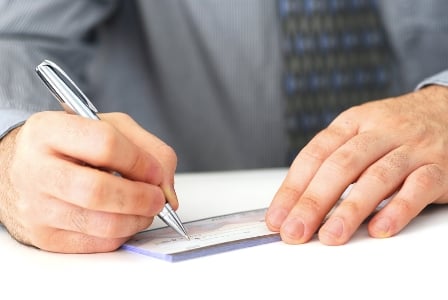The amount of money people keep in checking might say something about their faith in the economy

The US Federal Reserve may be feeling confident enough to embark on a path of rising interest rates, but that doesn’t mean that Americans aren’t doubtful of their country’s economic situation. And if anyone wants proof of that lack of confidence, one firm says, they should look at people’s checking accounts.
“Moebs Services, an economic-research firm in Lake Bluff, Ill., analyzed over 12,000 depository call reports and compared them to the Federal Reserve monetary data for 2017,” reported MarketWatch. “The average consumer checking balance has increased in 23 of the past 30 quarters.”
The working theory behind this is that Americans feel confident and keep little of their money in checking when times are good. In bad times, on the other hand, they start storing more in their checking accounts, effectively reining in their spending on retail and restaurants.
According to the report, the median amount stashed away in American checking accounts since 1991 has been US$2,263. Just before the recession in 2008, they thought times were good, and kept less than US$1,000 in their accounts on average. Since then, checking-account clients have been hoarding more money; their average balance today, according to the Moebs report, is US$2,263.
“Anything lower than this signifies the economy is doing well,” Michael Moebs, economist and CEO of Moebs Services, told MarketWatch. “Anything above this indicates the economy is not doing well.”
Moebs said that consumers in banks, thrifts, and credit unions by region, state, city, and asset size have been warehousing more checking dollars as they remain leery of the economy. Paradoxically, however, Americans also racked up over US$1 trillion in credit-card debt last year, suggesting that locking up cash hasn’t reduced their dependence on consumer debt.
To Moebs, that’s not so surprising. “Wages have not increased,” he said. “Jobs are still hard to find.”
Interest rates are low, he added, while full unemployment, which counts discouraged workers and those working part-time for economic reasons, has hit a high at 8%.



